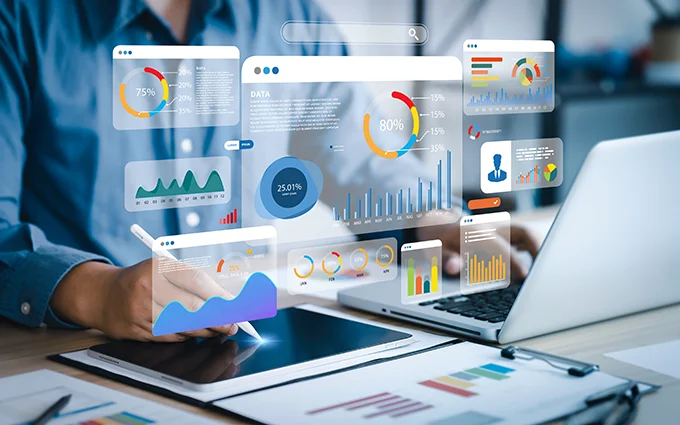In 2024, Statista reported that e-commerce sales worldwide exceeded $4.1 trillion, which is great news overall. But how do you ensure your business benefits from the ongoing online spending spree? This is where a smooth sales funnel can make all the difference by accelerating the customer journey.
Add automation to the mix, and you have a high-performance sales funnel that can drive conversions, generate revenue, and reduce the need for manual lead nurturing, lead following, and other tasks. The trick is to know how to build a high-performance sales funnel using automation. Keep reading and find out how to do just that.
Automated Sales Funnels Explained
The purpose of an automated sales funnel is to simplify the process of guiding potential customers from the awareness stage to making a purchase. By using tools such as automated customer relationship management (CRM) systems, AI, and email sequences, you can create a sales funnel that encourages leads and propels conversions automatically.

Sales Funnel Stages
Before you can create and automate a sales funnel, you need to identify its key stages, which represent the journey a potential customer takes from awareness to purchase.
Stage 1: Awareness: Potential customers need to learn about your brand, products, or services. At this stage, you need to capture their attention using advertising, product marketing, and social media.
Stage 2: Interest and evaluation: After potential customers become familiar with your brand, you need to inspire intrigue. This is when you frame your brand as one that can resolve their pain points, showcase products that might interest them, and nurture their interest by making product information easily accessible.
Stage 3: Desire: Encourage potential clients to help them recognize your products or services as the solution to their pain points. Offer incentives such as personalized offers or discounts at this stage of their journey.
Stage 4: Action: This stage is when the potential customer becomes a paying customer. Make sure that any obstacles that might lead to them abandoning their cart are removed, the purchasing or checkout process is straightforward, and that they’re kept updated regarding their order status.
Stage 5: Loyalty and re-engagement: Implement loyalty programs and use follow-up emails to keep customers engaged with your brand, build brand loyalty, and encourage them to make repeat purchases.

Why Your Business Needs a Sales Funnel
A sales funnel is integral to your success. Here’s why:
Boosts Sales
Implementing targeted marketing strategies that harmonize with your audience every step of the way can guide them from awareness to action, enhancing conversion rates and turning them into loyal customers. You can also integrate cross-selling and upselling into the sales funnel to improve the overall revenue each customer generates.
Increases Trust
Delivering valuable content and maintaining clear communication throughout the customer journey shows that your business is credible and reliable. Integrating case studies, positive reviews, and customer testimonials into the sales funnel can further increase your audience’s trust.
Enhances Customer Loyalty
Providing a positive experience throughout the customer journey and integrating exclusive offers, personalized communications, and regular follow-ups makes customers feel appreciated. When customers feel valued, you have better chances of seeing them return and refer your brand to others.
Generates Qualified Leads
Attracting a genuinely interested audience using targeted marketing strategies ensures that you engage with potential customers who are more likely to make a purchase. You can also use your sales funnel to collect data and insights for a better understanding of who your ideal customers are.
Expands Your Audience
Using a range of marketing channels, such as content marketing, email, and social media, allows your brand to reach a wider audience. Beyond this, the structure of the sales funnel can guide potential customers along a journey that sees them become customers and supporters of your brand.

How to Build an Automated Sales Funnel
Now you know why your business needs an automated sales funnel, follow these easy steps to build one.
Implement The Use Of A CRM
Use Customer Relationship Management (CRM) software to manage and track potential customers. Segment your leads to categorize prospects based on demographics, behaviors, and interests, ensuring they receive the right content and communication when required.
Choose software that will allow you to automate everything from tracking customer interactions to following up on specific customer actions.
Identify Your Ideal Audience
Use AI and predictive analytics to identify high-value prospects and their preferences. Consider who these ideal customers are, which problems they’re trying to solve, and what motivates them to make their purchases. Doing this helps you paint a clear picture of your audience, enabling you to segment them according to behaviors, interests, or preferences. Tailor your content and communications to their needs.
Outline the Customer Journey
Create a map of the customer journey, outlining the process of moving from awareness to purchase – and don’t stop there.
Go further.
Identify the concerns or questions your ideal customers will likely have at each stage, the type of content that will propel them on their journey, and touchpoints where you can implement automation. Use this outline to create a smooth customer journey that meets their needs from start to finish.
Use Lead-Generating Tactics
Use search engine optimization (SEO), social media ads, and paid search ads to direct potential customers to your automated sales funnel. In exchange for contact information, you can offer incentives like free ebooks, discounts, or webinars to encourage follow-through.
At the awareness stage of the journey, aim for more than your ideal customers because you can segment them when they enter the funnel. Use tailored content and offers to encourage their interests.
Use Automated Email & Social Media Campaigns
60% of people have purchased goods when prompted by an email, and 74% of all shoppers learn about products, discounts, and purchasing options on social media. This makes these two marketing channels integral to your funnel.
Use a reliable solution such as DYL to set up automated email sequences to encourage potential customers at each funnel stage. Ensure that people who sign up for your newsletter receive an email welcoming them and personalized messages guiding them toward making a purchase.
For social media, automate your posting based on optimal engagement times and automatically serve ads to users who visited your website but didn’t convert. It’s also a good idea to personalize content based on user interests and past interactions and use DYL’s analytics tools to identify successful content and campaigns.
Use Chatbots and AI for Customer Interaction
Chatbots play a vital role in qualifying leads and answering queries instantly. With a chatbot, you can engage visitors in real time and provide 24/7 support to capture leads anytime. Plus, you can qualify prospects by asking predefined questions and seamlessly guiding them through the sales process with conversational workflows.
Cross-Sell or Upsell
Set up automated cross-selling or upselling to offer related products, enhancements, or upgrades when a customer makes a purchase. Ensure these are presented as a value-adding natural extension of the journey.
Re-Engage Potential Customers
Automate exclusive offers, personalized follow-up emails, and retargeting ads to re-engage potential customers who did not make a purchase after entering your sales funnel. This content should remind potential customers of the value that your brand can add to their lives and encourage them to think about making a purchase.
Reach out regularly to keep potential customers engaged, which can increase the chances of them making a purchase in the future.
Track and Assess Sales Funnel Metrics
To optimize your strategy using data, start by tracking key metrics such as conversion rates, bounce rates, and customer journey data.
You can use A/B testing by experimenting with different calls to action, email subject lines, and landing page designs to determine what resonates best with your audience. You can also automate reporting with AI-driven analytics to generate real-time performance insights, allowing for faster, data-backed decision-making. Regularly monitoring these indicators will help identify areas for improvement.
Turn Potential Customers Into Brand Converts
A high-performance automated sales funnel is a double-edged sword that lets you streamline and speed up the way you do business while constantly encouraging potential customers to convert. Trusted software such as DYL makes this possible. Use these tips to create a powerful and relevant customer journey that takes them all the way through the funnel.
